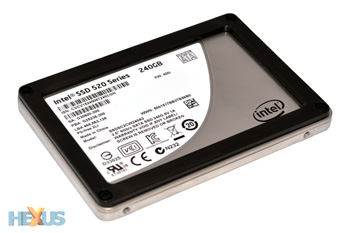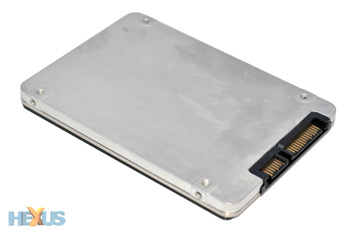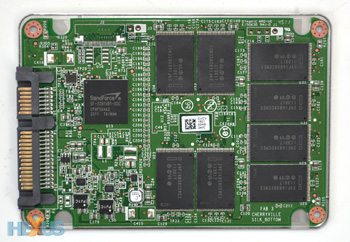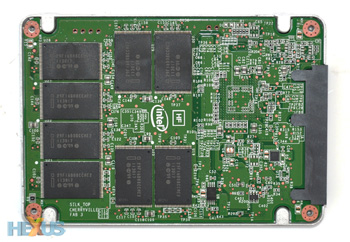Introduction
Will it, won't it? That's the question we asked ourselves when we pondered whether or not Intel would turn to SandForce for its high-speed SSD needs.
As it turns out, Intel decided to do exactly that, and the first product of its new partnership is being born today in the form of the 520 Series. The drive - codenamed Cherryville - is Intel's first SandForce-based solution and arrives in 60GB, 120GB, 180GB, 240GB and 480GB capacities.
So what's the fuss, second-generation SandForce drives have been available from a long list of manufacturers for the best part of a year, and if you've a soft spot for blazing performance, Intel's most recent solid-state efforts probably didn't set your world on fire, did they?
This is true, but there's a flipside to that argument, too, as while Intel's previous SSDs haven't been the quickest in terms of straight-line speed, they have garnered a reputation of being among the most reliable. And that's precisely why a SandForce-based drive from Intel is an intriguing prospect; can a company that spends billions of dollars on research and development deliver the performance of the SandForce controller and the reliability of the Intel brand in a single package?
Intel's certainly confident. While rival drives powered by the SF-2281 SandForce chip have experienced firmware bugs, blue screens of death and product recalls, the 520 Series arrives with the promise of having undergone "thousands of hours of Intel testing and validation." We'd expect nothing less, but the manufacturer has enough faith in its 520 Series drive to attach a five-year limited warranty as standard - something that few other SSD providers are willing to offer.
Intel's custom PCB has a lot in common with existing SandForce solutions; its make-up consists of an SF-2281 controller and a selection of 16GB multi-level cell Intel 25nm Compute NAND memory devices hooked up to a backward-compatible SATA 6Gbps interface.
The SandForce chip is of course the brains of the operation, and it brings with it all the features that high-performance users have come to know and love - including TRIM support, 256-bit AES encryption and on-the-fly data compression. The latter, a key part of all SF-2281 drives, reduces the size of data written to the NAND, which in turn improves write performance (it's quicker to write less data) and increases longevity (smaller writes prevent the NAND from wearing out).
On-the-fly data compression is a good thing, but its benefits are only felt in scenarios where the data is actually compressible. Most operating system files and application files meet that criteria, but content such as pictures, music and movies typically can't be compressed. As a result, the real-world performance of the drive will be determined by two key factors; the overall capacity and the data type used. Intel's being as transparent as possible by specifying the 520 Series SSD's maximum performance credentials in two forms; compressible and incompressible.
Intel 520 Series SSD |
||||||
|---|---|---|---|---|---|---|
| Specification | 60GB | 120GB | 180GB | 240GB | 480GB | |
| Max. Sequential Read (MB/s) | Compressible | 550 | 550 | 550 | 550 | 550 |
| Incompressible | 430 | 550 | 550 | 550 | 550 | |
| Max. Sequential Write (MB/s) | Compressible | 475 | 500 | 520 | 520 | 520 |
| Incompressible | 80 | 150 | 170 | 235 | 275 | |
| Max. Random 4KB Read (IOPs) | Compressible | 15,000 | 25,000 | 50,000 | 50,000 | 50,000 |
| Incompressible | 12,000 | 24,000 | 46,000 | 46,000 | 46,000 | |
| Max. Random 4KB Write (IOPs) | Compressible | 80,000 | 80,000 | 80,000 | 80,000 | 50,000 |
| Incompressible | 6,900 | 13,000 | 13,000 | 16,500 | 9,500 | |
| Price in 1,000-unit quantities | $149 | $229 | $369 | $509 | $999 | |
Write performance clearly takes a hit when working with incompressible data, but Intel's making use of a "co-defined and validated firmware release" that promises "performance on all fronts with obsessively high reliability."
Without beating around the bush, Intel's suggesting that its 520 Series will be among the quickest and most reliable SandForce solutions on the market, and pricing is a reflection of that. At launch, Intel's drives are a touch more expensive than rival solutions; Kingston's HyperX, for example, costs $205 at retail for a 120GB model and $440 for a 240GB model.
The added peace of mind on offer from the five-year warranty may be reason enough to shell out a little extra, but can the Intel drive also deliver higher performance? To find out, we've got a 240GB review sample to play with.













